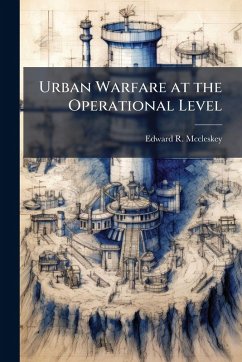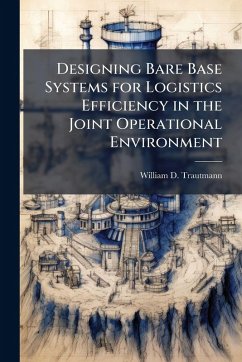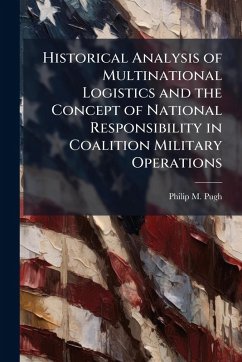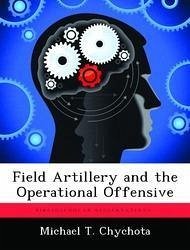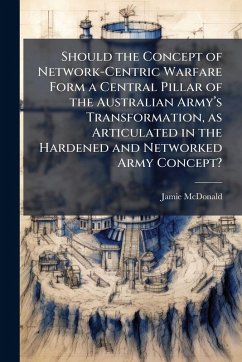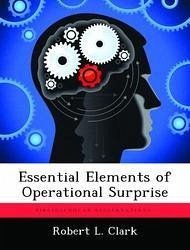
In Search of a Joint Urban Operational Concept
Versandkostenfrei!
Versandfertig in über 4 Wochen
15,99 €
inkl. MwSt.

PAYBACK Punkte
8 °P sammeln!
Combat operations in the urban area are not new to warfare. The United States'; military conducted large-scale urban operations in World War II, Korea, and Vietnam. During the last sixty years, the United States'; Army approached the urban area by rubbling or isolating the city. The combination of the increasing potential for urban operations and political restraints on friendly and non-combatant casualties reduces the usefulness of these historical approaches. Joint forces need a new urban operational concept that achieves strategic aims without rubbling the city or causing politically unacce...
Combat operations in the urban area are not new to warfare. The United States'; military conducted large-scale urban operations in World War II, Korea, and Vietnam. During the last sixty years, the United States'; Army approached the urban area by rubbling or isolating the city. The combination of the increasing potential for urban operations and political restraints on friendly and non-combatant casualties reduces the usefulness of these historical approaches. Joint forces need a new urban operational concept that achieves strategic aims without rubbling the city or causing politically unacceptable levels of non-combatant and friendly casualties. Current joint operational concepts such as Joint Vision 2020 do not provide a view of future warfare. Emerging operational concepts such as Rapid Decisive Operations depend on long-range surveillance and engagement of enemy forces to reduce the requirement of close combat. The search for a joint urban operational concept is analogous to the Russian search for a new method of warfare during the inter-war period of the World Wars. Russian theorists realized the difficulty of destroying an enemy system with an attrition-linear attack. Operational Shock approached the enemy as a system and attacked its hierarchic nature attempting to create operational disunity. A survey of operational shock and systems theory revealed five critical aspects to creating this systemic effect. These aspects, attacking control, maneuver, simultaneity, depth, and achieving cognitive effects, were contrasted with the unique nature of the urban area. This work has been selected by scholars as being culturally important, and is part of the knowledge base of civilization as we know it. This work was reproduced from the original artifact, and remains as true to the original work as possible. Therefore, you will see the original copyright references, library stamps (as most of these works have been housed in our most important libraries around the world), and other notations in the work. This work is in the public domain in the United States of America, and possibly other nations. Within the United States, you may freely copy and distribute this work, as no entity (individual or corporate) has a copyright on the body of the work. As a reproduction of a historical artifact, this work may contain missing or blurred pages, poor pictures, errant marks, etc. Scholars believe, and we concur, that this work is important enough to be preserved, reproduced, and made generally available to the public. We appreciate your support of the preservation process, and thank you for being an important part of keeping this knowledge alive and relevant.




